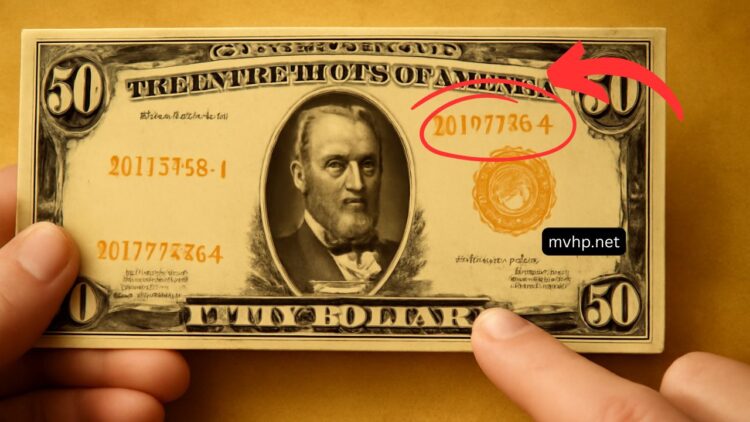The 1928 $50 Gold Certificate is a rare and historically significant piece of U.S. currency. Issued during the Great Depression, this note was part of the last series of large-size gold certificates.
Due to the gold recall of 1933, most of these certificates were withdrawn from circulation, making surviving examples highly sought after by collectors.
Key Features of the 1928 $50 Gold Certificate
| Feature | Details |
|---|---|
| Series Year | 1928 |
| Denomination | $50 |
| Design | Portrait of Ulysses S. Grant on the obverse; U.S. Capitol on the reverse |
| Signatures | Woods and Mellon |
| Seal | Gold Treasury Seal |
| Size | Large-size note |
| Redemption | Originally redeemable for gold coin or bullion |
| Obsolescence | Rendered obsolete by the Gold Reserve Act of 1934 |
Historical Context
In 1933, during the Great Depression, the U.S. government issued Executive Order 6102, which required citizens to exchange their gold coins, gold bullion, and gold certificates for U.S. dollars.
This move aimed to stabilize the economy and prevent hoarding of gold. As a result, most gold certificates, including the 1928 $50 series, were withdrawn from circulation and destroyed.
Market Value and Rarity
Due to their limited number and historical significance, the 1928 $50 Gold Certificates have become valuable collector’s items.
Prices can vary based on the note’s condition, serial number, and any unique characteristics. For instance, a well-preserved note can fetch significant sums at auctions, reflecting its rarity and demand among collectors.
Visual Appeal and Collectability
The design of the 1928 $50 Gold Certificate is notable for its intricate details and historical imagery. The obverse features a portrait of Ulysses S. Grant, the 18th President of the United States, while the reverse depicts the U.S. Capitol building.
The gold Treasury seal and the large size of the note add to its visual appeal, making it a prized possession for collectors.
The 1928 $50 Gold Certificate is more than just a piece of currency; it is a tangible link to a pivotal moment in U.S. history. Its rarity, historical context, and unique design make it a valuable item for collectors and history enthusiasts alike.
Whether you’re looking to add to your collection or simply appreciate the artistry and history behind this note, the 1928 $50 Gold Certificate remains a remarkable testament to America’s monetary past.
FAQs
Why was the 1928 $50 Gold Certificate withdrawn from circulation?
The 1928 $50 Gold Certificate was withdrawn due to the Gold Reserve Act of 1934, which required all gold certificates to be surrendered to the U.S. Treasury.
How can I determine the value of my 1928 $50 Gold Certificate?
The value depends on factors such as the note’s condition, serial number, and any unique features. Consulting a professional currency appraiser or referring to recent auction results can provide an estimate.
Are there any commemorative versions of the 1928 $50 Gold Certificate?
Yes, modern commemorative versions of the 1928 $50 Gold Certificate are available, often made with gold foil and graded for collectors.




